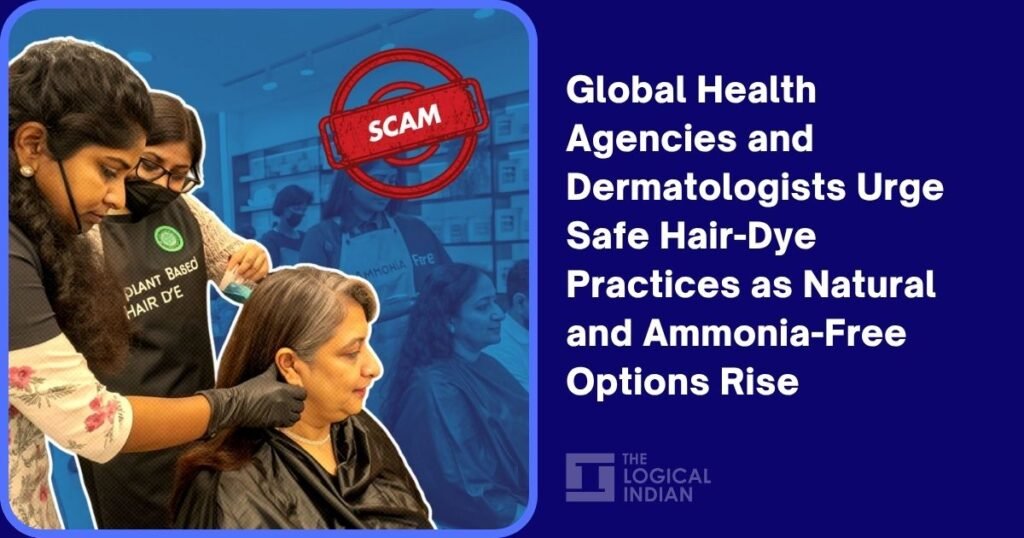Ensuring Safe Hair Dye Usage: A Comprehensive Guide to Consumer Protection
Recent advisories from global health agencies and dermatology experts emphasize the significance of consumer safety when it comes to hair dye usage, encompassing both chemical and natural options. With the rise of ammonia-free and plant-based dyes, there’s an increasing need for awareness and precaution.
Regulatory Safety and Industry Trends
European Union Guidelines
The European Union’s Scientific Committee on Consumer Safety (SCCS) has concluded that specific hair dye ingredients, such as HC Red No. 18 and HC Yellow No. 16, are safe for use within regulated concentrations. This reassurance provides confidence to consumers within the EU.
United States Regulations
In the United States, the Food and Drug Administration (FDA) plays a pivotal role in regulating hair dye ingredients. Regular updates and alerts inform consumers about potential risks associated with certain products. More information on FDA regulations can be found here.
Evolving Market Trends
The hair dye market is experiencing a significant transformation. There’s a notable shift towards ammonia-free, vegan, and plant-based products, perceived as gentler alternatives. This trend is driven by growing consumer awareness regarding health, sustainability, and long-term scalp care.
Key Ingredients and Safety
- Ammonia-free formulations
- Plant-based materials
- Vegan certifications
Why Choose Ammonia-Free Dyes?
Ammonia-free dyes reduce the potential for irritation and have gained popularity among consumers looking for healthier alternatives. For more insights on hair dye ingredients, check out this informative article.
Expert Advice: How to Colour Hair Safely
Dermatological Recommendations
Dermatologists and trichologists strongly advise the following before using hair dyes:
-
Perform a Patch Test: Even products previously tolerated should be tested on a small patch of skin 48 hours ahead of application to rule out allergic reactions.
Dr. Rashmi Sharma, a senior dermatologist, emphasizes: “Always test the dye on a small patch of skin to ensure safety.”
- Avoid Use on Irritated Scalp: If your scalp is inflamed or wounded, it is best to refrain from dyeing.
Product Selection Tips
- Select products with fewer harsh chemicals.
- Look for safety seals from recognized authorities.
- Always follow the manufacturer’s instructions carefully.
- Avoid mixing different brands of dye.
- Rinse the scalp thoroughly post-application.
For those with sensitive skin, natural dyes like henna or indigo may be safer options, though patch testing remains crucial.
Consumer Protection and Recent Alerts
Several global regulations, such as the EU’s Regulation No. 1223/2009 and the FDA’s coal-tar dye guidelines, exist to protect consumers from harmful ingredients in hair dyes.
Recent Safety Alerts
Recent warnings, including those regarding specific Schwarzkopf Palette products, highlight the need for vigilance among consumers. Such alerts have resulted in recalls and greater scrutiny over product safety. If you experience any adverse effects, it is vital to report them to relevant health authorities to promote accountability and safety.
Understanding the Risks: Long-Term Health and Scalp Concerns
While regulated hair dyes are generally safe for most individuals, improper use can lead to:
- Hair thinning
- Scalp irritation
- Allergic reactions
- Pigmentary changes
Can Hair Dyes Increase Cancer Risk?
Some studies have suggested potential connections between prolonged hair dye use and increased cancer risk, particularly among professionals exposed frequently. However, evidence for casual users remains inconclusive. Experts advocate for moderation, proper aftercare, and consulting a dermatologist if adverse symptoms occur.
The Importance of Community Awareness
As hair coloring becomes increasingly accessible and diverse, making informed choices is essential. Sharing experiences and knowledge within communities can promote safer practices. Engage in discussions and ask questions: How do you ensure your beauty routine protects your health?
For more insights on choosing safe beauty products, visit Consumer Reports.
Final Thoughts
Hair dye safety is pivotal for enjoying a vibrant look without compromising health. By adhering to expert guidelines and regulatory standards, you can ensure a safer hair coloring experience. Prioritize your scalp health and always stay informed!


